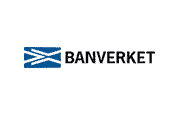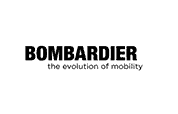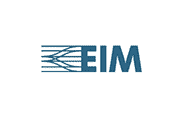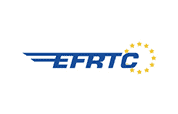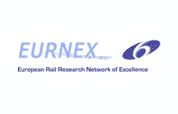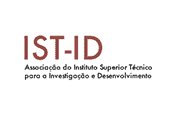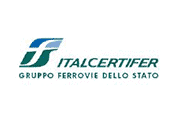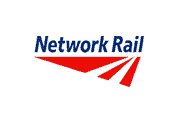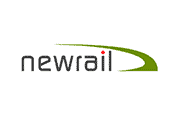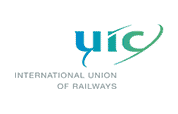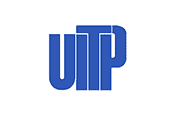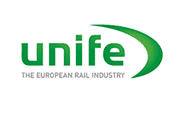The ERRAC Roadmap CSA project was designed to support the Advisory Council in its work and has focussed for a period of 3 years on the drafting and delivery of concrete and detailed roadmaps on common European R&D to implement the ERRAC Strategic Rail Research Agenda (SRRA). The ERRAC-ROADMAPS project started on 1 June 2009 and ran for three years and two months.
The ERRAC SRRA was built up on 6 pillars:
- Energy and Environment
- Personal Security
- Test, Homologation and Safety
- Competitiveness and enabling technologies
- Strategy and Economics
- Infrastructure
The ERRAC member chose to “translate” these pillars into the 5 priorities of the FP7 Transport program and thus has developed 9 – interrelated – Rail Research Roadmaps in the areas of Energy, Noise & vibration and Sustainable design & procurement, Passenger and Freight – medium & long distance – transport, Urban Mobility (developed together with ERTRAC) Urban, sub-urban and regional rail transport, Safety & security and Competitiveness (which includes rail infrastructure).
In addition to this and feeding into the Roadmaps, the ERRAC Roadmap project has developed a method and evaluated in detail more than 75 EU funded rail research projects, especially looking at the implementation of their results. This has led to the definition of projects with strong, medium and low “market uptake” and the factors influencing this as well as to recommendations for building up a proposal and consortium.
ERRAC- ROADMAP covers research related to all types of freight and passenger rail services as well as their interaction with other modes within the transport system (High Speed and conventional rail over long, medium and short distances, as well as urban rail and co-modal services). Through its work it implements the ERRAC Strategic Rail Research Agenda SRRA. It is setting the agenda and describing the targets between now and 2020, identifying what is needed to get there, what steps to take, how to facilitate this, what barriers to overcome etc. in other words to manage the way forward towards realizing the Vision 2020 for a sustainable European Railway system.
Mission and aims
The objective of this project has been to develop a framework of quality roadmaps structured around each of the key work packages identified by the ERRAC European Technology Platform. These roadmaps identify research needed to such a level of detail that the information contained within them can be directly transposed into actual research projects to be developed. The roadmaps also identify synergies and interrelationships between the individual research activities and they will be used as a tool to stimulate private and public, national and European research coherently. As a result it is also able to provide guidance and contribute to shape the calls of the European Commission’s Transport Work Programme.
Four major issues to be addressed have been highlighted for the ERRAC Roadmap:
- Holistic rail strategies for the minimization of operation, environmental maintenance and inspection costs for vehicles and infrastructure in general.
- Simple and economical rail maintenance and renovation of rail infrastructure.
- Improved real time information systems for rail operators, infrastructure managers and customers.
- Coordination with other public and private bodies in order to better fit the customers’ needs.
Structure
The ERRAC Roadmap CSA clearly addresses both the clusters set by the SRRA as well as the five ’activities’ reflecting the strategic and policy challenged facing Europe, as defined by the European Commission for the FP7 ’Transport’ theme.
The general framework of the activities for the next financed years is organised under the following working groups and with a clear defined involvement by the rail stakeholders and the participation to the working group is open to any expert:
WP1 - Greening Surface Transport
WP2 - Encouraging modal shift (long distance) and decongesting transport corridors
WP3 - Ensuring sustainable urban transport (including modal shift, light rail vehicles and metros)
WP4 - Improving safety and security
WP5 - Strenthening Competitiveness
WP6 - Evaluation Working Group
Deliverables
WP01 Greening Surface Transport
Rail transport has the capability to play a key role in a sustainable transport system by offering efficient services with low environmental impact, and these strengths need to be articulated in the political decision-making process. Through the use of mechanisms such as fairer pricing and the internalising of external costs, modal shift to rail and innovative co-modality concepts become more achievable and offer sustainable solutions for the various challenges in the transport sector. The promotion of environmentally adapted and efficient rail transport of passengers and goods is a key objective in Europe. The overall environmental performance of railway transportation is affected by contributions over the whole life cycle of the vehicles; from production, operational performance to final disposal. When designing a vehicle for improved environmental performance many different aspects which are related to environmental impact are taken into account.
Today’s energy and environmental research places high emphasis on energy efficiency, environmental impact, alternative energy sources to be prepared for the reduced availability and finally disappearing of fossil fuels. Energy resources are getting scarce and legislation on emissions is getting stricter. Even though the railway is the most energy-efficient and green transport mode, research is needed on energy efficiency and eco-design to further improve the performance of rail.
Noise and vibration have to be considered in a system and holistic approach to reduce emissions and external perceived noise levels. A lot has been done but research efforts should go on: reducing noise from individual sources (freight trains, noise, emission reductions from diesel engines on trains, etc.), and introducing technologies for active noise and vibration control. Software tools will assist the development of methods to reduce noise at source, to derive technologies and to enhance system assessment and decision-making processes.
Becoming greener means that we have to consider the overall railway life cycle and especially the elimination of materials with a negative environmental impact. Measures to consider include closed cycle waste management systems for a high level of recycling, dealing with the historical legacy of existing infrastructure (e.g. creosote sleepers), promoting greener land use by reducing pollution from rail sources (e.g. chemical treatment against vegetation) and reducing the emissions of electromagnetic waves. Sustainable procurement means careful consideration of environmental and societal aspects as well as the economic aspects when carrying out the investment process.
Finally, it is important to note that railways are also affected by the environment, in addition to having effects on the environment. Over time, the way that railways manage natural hazards and weather events will change due to the impact of climate change.
WP1 Deliverables
WP02 Encouraging modal shift (long distance) and decongesting transport corridors
WP2 Deliverables
WP03 Ensuring sustainable urban transport (including modal shift, light rail vehicles and metros)
Efficient urban, suburban and regional transport systems are critical elements of the sustainable development of urban areas, where some 80% of Europe’s citizens live.
Urban public transport and especially rail systems have numerous advantages, which shall never be shared by private car transport in terms of e.g. speed, capacity, safety, environmental friendliness, energy savings and urban space consumption. At the same time, car ownership and car use is increasing every day due to a great variety of attractive technical innovations which are easy to standardise and to implement on private vehicles and on roads or streets in comparison to rail systems.
Local public transport systems and especially (sub)urban rail systems are indeed far more complex technically than road systems and they involve for their management many more (public) stakeholders than private or commercial vehicles traffic management. In addition, local public transport services are operated under public transport contracts following public service requirements, which represent a heavy financial burden on local authorities for public transport services financing and public transport systems –and especially rail- funding as long as negative external costs of motorised road vehicle are not internalised. As a consequence public transport and (sub)urban rail will not be able to compete with private cars without an important improvement of public transport attractiveness, and a reduction in investment and operating costs.
This implies an important investment in local rail and in urban mobility research, a strong support from public authorities, and an agreement between local/regional/national public authorities, public transport and especially rail operators, and railway manufacturers to coordinate across Europe for technical harmonisation of products and services where it allows to bring European added value. This is the major challenge of WP3. At the same time, focusing on rail, the European manufacturing industry is a world leader for urban rail systems (metro, tramway and light rail) and has achieved significant innovation for the benefit of the customer (e.g. low floor tram), but has to remain competitive for most promising markets in Europe and outside Europe, especially in China and other Asian markets.

